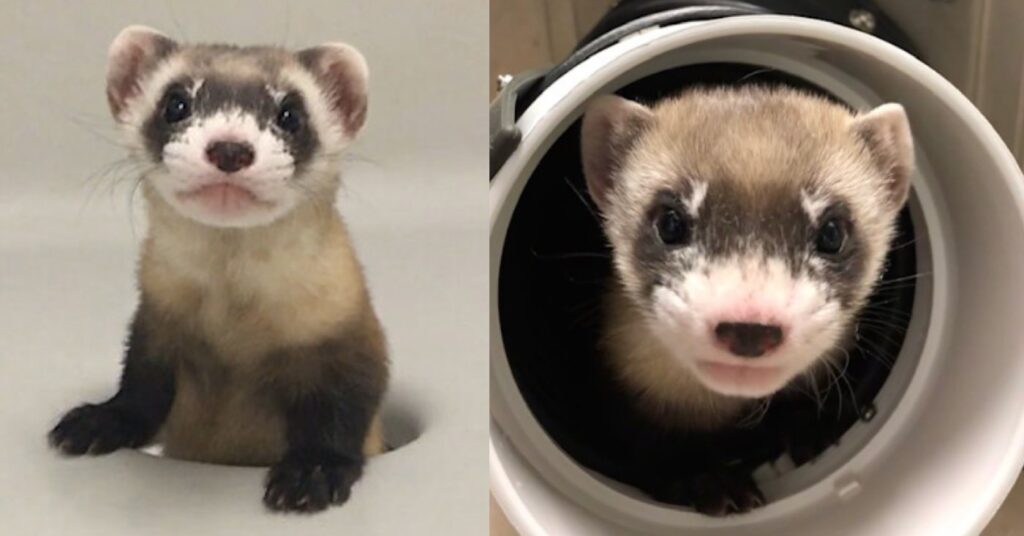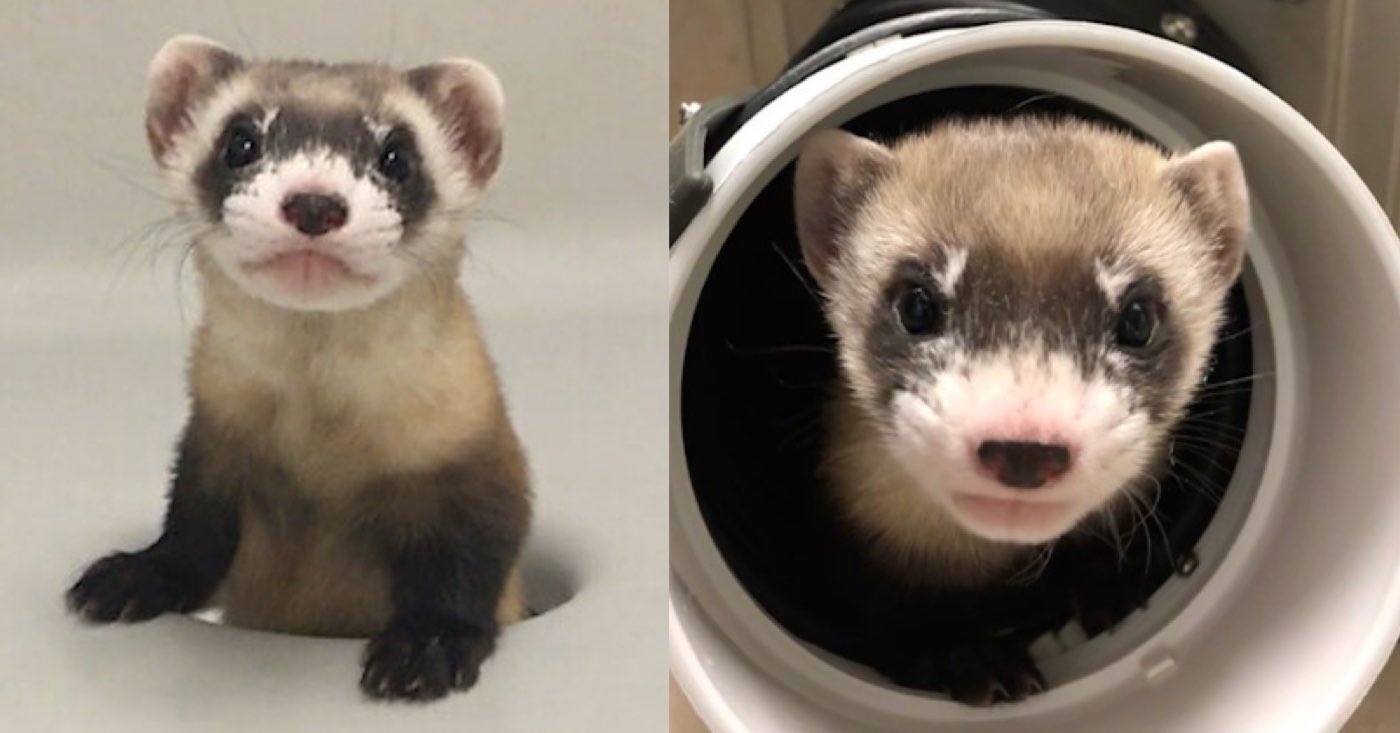Black-footed ferret recovery efforts aimed at increased genetic diversity and disease resistance took a bold step forward on Dec. 10, 2020, with the birth of “Elizabeth Ann,” created from the frozen cells of a black-footed ferret that lived more than 30 years ago.

The groundbreaking effort to explore solutions to help recover this endangered species results from an innovative partnership among the U.S. Fish and Wildlife Service and scientists at Revive & Restore, ViaGen Pets & Equine, San Diego Zoo Global, and the Association of Zoos and Aquariums.
“The Service sought the expertise of valued recovery partners to help us explore how we might overcome genetic limitations hampering recovery of the black-footed ferret, and we’re proud to make this announcement today,” said Noreen Walsh, Director of the Service’s Mountain- Prairie Region, where the Service’s National Black-footed Ferret Conservation Center is located.
“Although this research is preliminary, it is the first cloning of a native endangered species in North America, and it provides a promising tool for continued efforts to conserve the black-footed ferret.”
RELATED: Embryos Created at Christmas Are Viable—Raising Hopes For the 2 Remaining Northern White Rhinos
“Successful genetic cloning does not diminish the importance of addressing habitat-based threats to the species or the Service’s focus on addressing habitat conservation and management to recover black-footed ferrets,” Walsh continued.
Today, all black-footed ferrets are descended from seven individuals, resulting in unique genetic challenges to recovering this species. Cloning may help address the issues of genetic diversity and disease resilience in wild populations. Without an appropriate amount of genetic diversity, a species often becomes more susceptible to diseases and genetic abnormalities, as well as limited adaptability to conditions in the wild and a decreased fertility rate.
Once thought to be extinct and currently listed as an endangered species, black-footed ferrets were brought back from nearly vanishing forever by the Service and its partners after a Wyoming rancher discovered a small population on his land in 1981. Ferrets from this population were captured by the Wyoming Game & Fish Department and others to begin a captive breeding program to recover the species.
‘Willa’, a black-footed ferret captured among the last wild individuals, has no living descendants and is therefore not one of the seven founders. The Wyoming Game & Fish Department had the foresight to preserve her genes and sent tissue samples from Willa to San Diego Zoo Global’s Frozen Zoo in 1988. The Frozen Zoo established a cell culture and stewarded these precious frozen cells ever since, making today’s achievement possible.
A win for biodiversity
“San Diego Zoo Global’s Frozen Zoo was created more than 40 years ago with the hope that it would provide solutions to future conservation challenges,” said Oliver Ryder, their Director of Conservation Genetics. “We are delighted that we have been able to cryobank and, years later, provide viable cell cultures for this groundbreaking project.”
LOOK: Rescued Dog Helps Save Endangered Whales By Sniffing Out Their Poop as a Conservation Canine
A genomic study revealed Willa’s genome possessed three times more unique variations than the living population. Therefore, if Elizabeth Ann successfully mates and reproduces, she could provide unique genetic diversity to the species.
“We’ve come a long way since 2013 when we began the funding, permitting, design and development of this project with the U.S. Fish and Wildlife Service,” said Ryan Phelan, Revive & Restore Executive Director. “But it was a commitment to seeing this species survive that has led to the successful birth of Elizabeth Ann. To see her now thriving ushers in a new era for her species and for conservation-dependent species everywhere. She is a win for biodiversity and for genetic rescue.”
In 2018, the Service issued the first-ever recovery permit for cloning research of an endangered species, allowing Revive & Restore to initiate genetic analyses and proof of concept trials. This work builds upon recent advancements in cloning processes developed by ViaGen Pets & Equine, which successfully created embryos from the frozen cell line and implanted them into a domestic ferret surrogate.
Mid-gestation, the surrogate mother was transferred from ViaGen Pets & Equine to the Service’s National Black-Footed Ferret Conservation Center to give birth to the cloned kit under the Service’s authority. The NBFFCC staff’s extensive experience breeding and caring for black-footed ferrets ensured the safe arrival of the first U.S. endangered species clone.
Researchers continue to closely monitor the young kit and Elizabeth Ann and her surrogate mother are kept separate from other breeding black-footed ferrets. She will live her life at the Center as additional research is completed. The team is working to produce more black-footed ferret clones in the coming months as part of continuing research efforts.
(Source: U.S. Fish and Wildlife Service)
SHARE the Breakthrough For Adorable Faces Like This on Your Social Media…




















